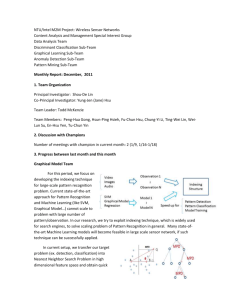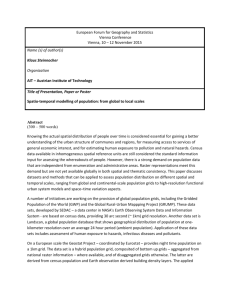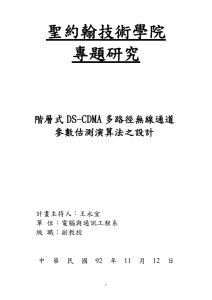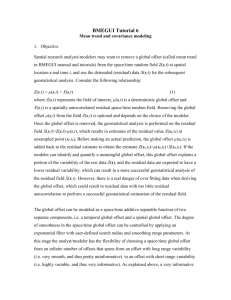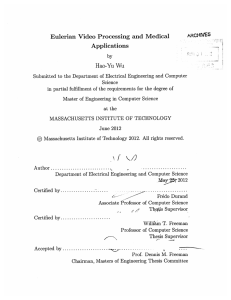Supplementary Note 1
advertisement
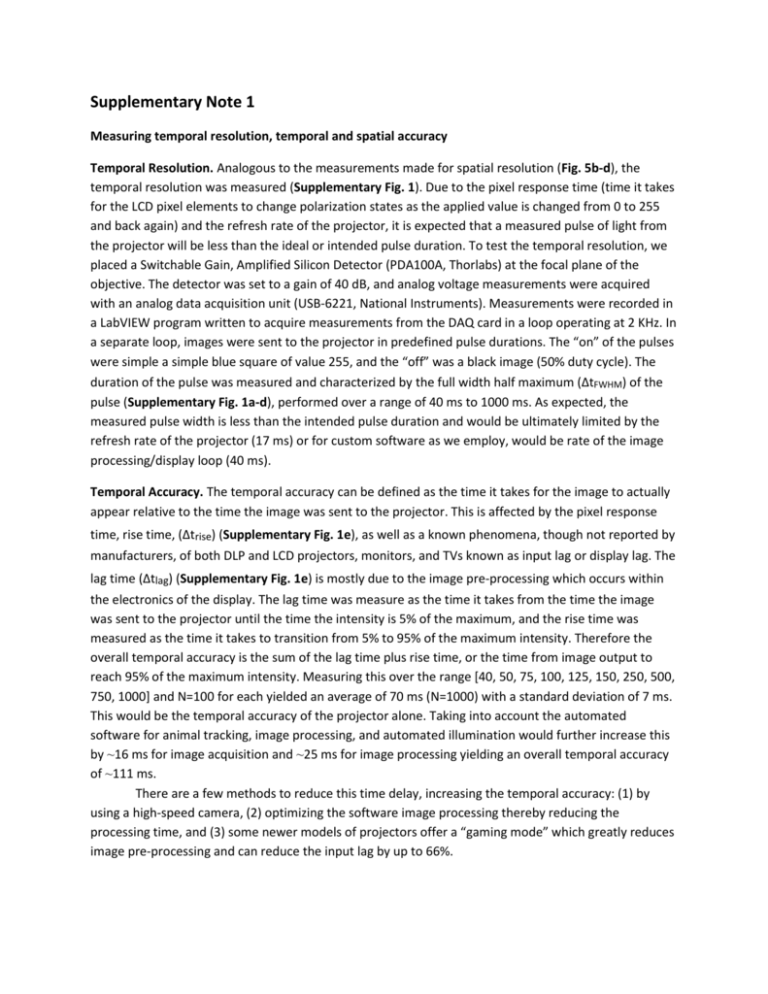
Supplementary Note 1 Measuring temporal resolution, temporal and spatial accuracy Temporal Resolution. Analogous to the measurements made for spatial resolution (Fig. 5b-d), the temporal resolution was measured (Supplementary Fig. 1). Due to the pixel response time (time it takes for the LCD pixel elements to change polarization states as the applied value is changed from 0 to 255 and back again) and the refresh rate of the projector, it is expected that a measured pulse of light from the projector will be less than the ideal or intended pulse duration. To test the temporal resolution, we placed a Switchable Gain, Amplified Silicon Detector (PDA100A, Thorlabs) at the focal plane of the objective. The detector was set to a gain of 40 dB, and analog voltage measurements were acquired with an analog data acquisition unit (USB-6221, National Instruments). Measurements were recorded in a LabVIEW program written to acquire measurements from the DAQ card in a loop operating at 2 KHz. In a separate loop, images were sent to the projector in predefined pulse durations. The “on” of the pulses were simple a simple blue square of value 255, and the “off” was a black image (50% duty cycle). The duration of the pulse was measured and characterized by the full width half maximum (∆tFWHM) of the pulse (Supplementary Fig. 1a-d), performed over a range of 40 ms to 1000 ms. As expected, the measured pulse width is less than the intended pulse duration and would be ultimately limited by the refresh rate of the projector (17 ms) or for custom software as we employ, would be rate of the image processing/display loop (40 ms). Temporal Accuracy. The temporal accuracy can be defined as the time it takes for the image to actually appear relative to the time the image was sent to the projector. This is affected by the pixel response time, rise time, (∆trise) (Supplementary Fig. 1e), as well as a known phenomena, though not reported by manufacturers, of both DLP and LCD projectors, monitors, and TVs known as input lag or display lag. The lag time (∆tlag) (Supplementary Fig. 1e) is mostly due to the image pre-processing which occurs within the electronics of the display. The lag time was measure as the time it takes from the time the image was sent to the projector until the time the intensity is 5% of the maximum, and the rise time was measured as the time it takes to transition from 5% to 95% of the maximum intensity. Therefore the overall temporal accuracy is the sum of the lag time plus rise time, or the time from image output to reach 95% of the maximum intensity. Measuring this over the range [40, 50, 75, 100, 125, 150, 250, 500, 750, 1000] and N=100 for each yielded an average of 70 ms (N=1000) with a standard deviation of 7 ms. This would be the temporal accuracy of the projector alone. Taking into account the automated software for animal tracking, image processing, and automated illumination would further increase this by ~16 ms for image acquisition and ~25 ms for image processing yielding an overall temporal accuracy of ~111 ms. There are a few methods to reduce this time delay, increasing the temporal accuracy: (1) by using a high-speed camera, (2) optimizing the software image processing thereby reducing the processing time, and (3) some newer models of projectors offer a “gaming mode” which greatly reduces image pre-processing and can reduce the input lag by up to 66%. Spatial Accuracy. The spatial resolution of the system was measured12 (Fig. 5b-d) and found to be 14 µm using a 4x objective and 5 µm at 25x. This can be thought of as the limits of an optical system to display an object. Another critical feature is the spatial accuracy, or how close an intended target can be illuminated. If the object is not moving, then this can simply be measured by selecting a target and illuminating it and measuring the distance from intended target to actual illumination. This was performed and yielded a spatial accuracy of less than 3 µm (Supplementary Note 2 of Ref. 12). If the target is moving, then another critical aspect is the temporal accuracy as defined and measured above. We can therefore define another spatial accuracy as ∆dsa = v*∆tta, where ∆dsa represents spatial accuracy and tta represents temporal accuracy. Assuming a representative C. elegans moving forward at 250 µm sec-1, then the spatial accuracy would be ~28 µm, thus our illumination would be off-target by as much as this amount. In all experiments performed, the boundaries of our illumination extended well beyond this amount relative to the intended target (neuron or muscle cells). It is suggested, knowing this temporal and spatial accuracy, the intended illumination region is chosen such that it is greater than the target area by at least the amount defined by the spatial accuracy, ∆dsa. For very slow moving objects such as cultured cells, the spatial accuracy would be determined by the previously reported value of less than 3 µm.


